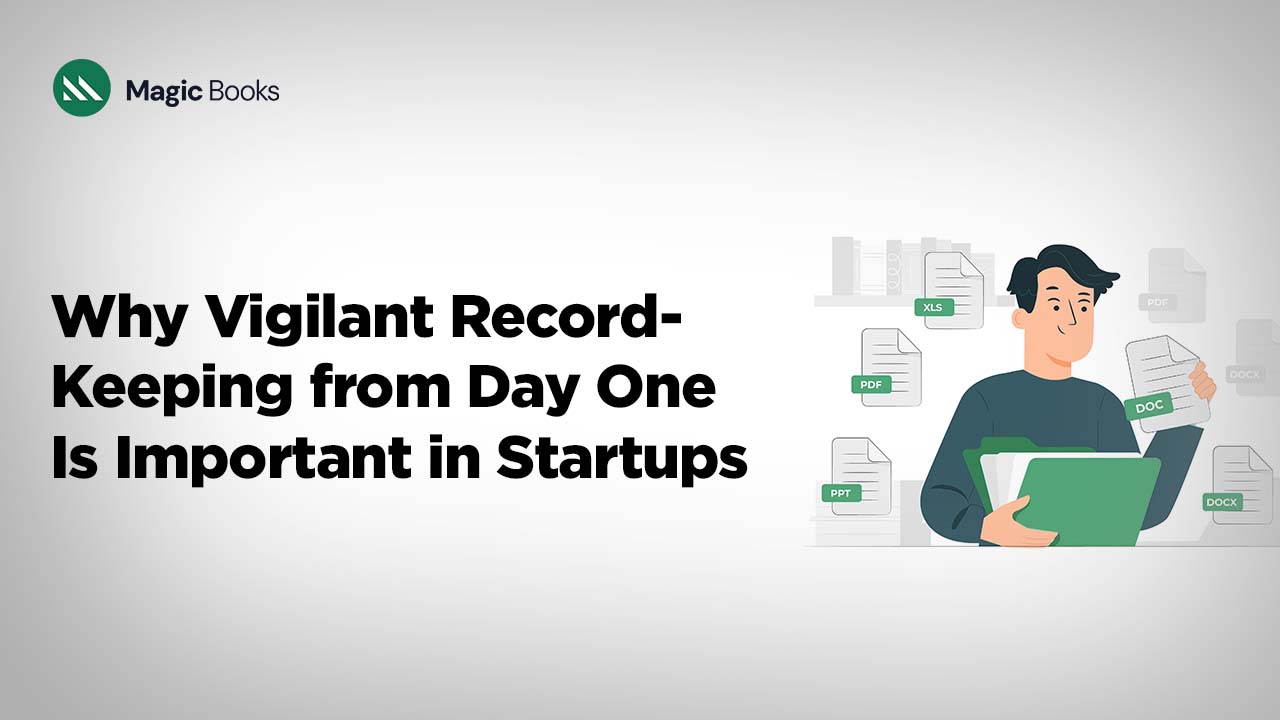Beginning a new business is an exciting venture full of ambitions and innovations aplenty. However, entrepreneurs do not pay heed to the legal risks, tax ramifications, and decision-making importance that are involved in giving careful thought to record-keeping. Without an unambiguous record of transactions entered, a seed-stage SaaS company would have fared very poorly in an IRS audit, having been unable to support many of its costs and risk unforeseen penalties. Giving early attention to detail not only ensures compliance but also establishes the data foundation necessary for strategic growth.
Moreover, systematic accounting records allow bookkeepers and advisors to give sound advice. When the proprietor of a small retail boutique realized that her marketing ROI was plummeting, her accountant could quickly pinpoint the problem because the client had clear Bank Transaction Logs & Reconciliations. This anecdote illustrates that careful record-keeping is not merely compliance—it’s a prelude to data-driven decisions.
Finally, lenders and investors demand transparency. Keeping a Balance Sheet and Cash Flow Statement up to date not only demonstrates professionalism but also instills confidence among stakeholders. According to the American Institute of CPAs, companies providing reconciled and transparent financials in the first pitch meetings are funded 30% faster. You would be aware of what records to keep first and how to keep them in an effective manner as your practice grows.
Key Financial Documents Needed by All Startups:
- Bank Transaction Reconciliations and Logs
All startups need to have accurate bank transaction records right from the beginning, matching each deposit and withdrawal to the corresponding receipts or invoices. Monthly reconciliation is essential to confirm that the accounting software and bank records are in sync, thereby avoiding “mystery” charges that may go undetected. Best practices include receiving direct bank feeds into software like QuickBooks or Xero, or Magicbooks, and setting up bank rules for regular transactions. A technology company nearly faced a cash-flow crisis last year purely because of a duplicate payment to a supplier that its bookkeeper caught while reconciling.
- Income Statements & P&L Reports:
A Statement of Income—or a Profit and Loss (P&L) Report—is a compilation of revenues, expenses, and costs over a given timeframe, thus shedding light on trends in profitability. The majority of experts recommend its preparation on a monthly basis for internal stakeholders and quarterly for external stakeholders. For a B2B SaaS entrepreneur, monthly P&L reviews identified an unsustainable customer acquisition cost before its effect on the runway. Incorporating these reports in your advisory process enables real-time coaching of clients on cost-control measures.
- Balance Sheets:
The Balance Sheet categorizes assets, liabilities, and equity at a moment in time, thus providing a snapshot of financial wellness. Investors scrutinize balance sheets closely to assess liquidity ratios and solvency measures before investing money. A retail boutique seeking a bank loan improved the likelihood of approval by showing a well-organized balance sheet with minimal long-term debt and adequate current assets. You ought to instruct clients to reconcile loan amortization charts and fixed-asset schedules every quarter to ensure accuracy.
- Cash Flow Statements:
A Cash Flow Statement details the movement of cash between operating, investing, and financing activities. The report is instrumental in proving runway and burn rate, particularly for early-stage startups that may be able to report accounting profits but are plagued by cash deficits. Three methods of preparing cash flow statements—direct, indirect, and a hybrid approach; however, most small firms opt for the indirect method due to its ease of application. A seed-funded app company, for example, learned from its cash flow reports that prepaid expenses were consuming liquidity more than expected, triggering a change to monthly expense accruals.
- Aging Reports for Accounts Payable and Receivable:
Monitoring Accounts Payable Aging and Accounts Receivable Aging reports reduces cash-flow constraints. DSO and DPO directly influence working capital management. A consulting company reduced its average DSO from 60 days to 30 days through the use of automated reminders and early-payment discounts. Likewise, monitoring payables avoids late charges and maintains healthy vendor relations. Including these age-based analyses in monthly closes allows advisors to make best-credit-term recommendations.
- Payroll & Payroll Tax Filings:
Even if it is a solo operation, it’s vital to monitor payroll obligations when making owner draws or wages. Mismanagement can result in severe penalties for belated tax payments and filings. As an illustration, IRS Form 941, quarterly federal payroll tax reporting, has severe deadlines—end of the month after each quarter. Leverage payroll services with automated tax reporting (e.g., Gusto or ADP) to lower compliance risk and keep time for value-added advisory work.
- Equity & Cap Table Records:
An open Cap Table, recording ownership percentages, option grants, and vesting schedules, avoids founder-investor disputes. One misissued share once jeopardized a Series A round before a forensic audit rectified the discrepancy. Having a living, electronic cap table maintained through software such as Carta or Shareworks keeps all equity transactions recorded, dated, and supported by board resolutions.
- Use Tax and Sales Tax Filings
Following Wayfair v. South Dakota, startups with substantial in-state economic activity can be subject to multi-state sales tax requirements. A knowledge of nexus legislation and keeping up with sales tax books by jurisdiction is essential. Monthly or quarterly sales tax returns must be filed by retailers based on volume. An online shopper avoided a six-figure bill by voluntarily registering in those jurisdictions in which it had the economic nexus and monitoring taxable sales on their ERP.
- Advanced Record-Keeping for Scaling Startups:
When firms grow, job costing or project profitability analysis may be used by advisors. Following costs by customer or project allows for correct billing rates and calculation of gross margin. Breaking down B2B v. B2C revenues also shows which markets generate greater lifetime value. Connecting CRM systems such as Salesforce or HubSpot to your general ledger through middleware (i.e., Zapier or Workato) automates revenue schedules and improves data integrity.
Choosing Appropriate Solution and Techniques:
Cloud accounting software all have their own strengths: QuickBooks shines for small- to mid-sized companies with its third-party app ecosystem, Xero provides better multi-currency management, and NetSuite grows with mid-market companies. Bank rule automation, the use of receipt-scanning apps (such as Expensify or Dext), and the creation of Zapier workflows can cut manual entry by as much as 75%. Use rigorous version control and backup procedures—enable audit trails, limit user permissions, and save encrypted backups offsite to protect data.
Best Practices in Preparedness for Audits:
A solid audit readiness starts with building a strong audit trail, an uninterrupted record of all financial activity and supporting documents. Organizations need to adopt standardized folder structures and naming conventions—both physical and digital—to facilitate easy retrieval of bank statements, invoices, and contracts during an audit (IRS Publication 583; AICPA Audit Guide). Digitally, begin by scanning all paper records to searchable PDF formats and labeling them with metadata like date, transaction type, and vendor name. Physically, keep originals in chronological binders or file cabinets divided by fiscal year and document type. This organized system not only speeds auditor requests but also minimizes the risk of missing documents that would create red flags.
A detailed retention calendar in accord with IRS and state law is of utmost significance. The IRS generally demands business documents to be kept on record for at least three years from the date of filing; however, some documents—like payroll tax records or depreciation schedules for property—are to be kept for as long as seven years. It is recommended to develop a company-wide records retention policy that dictates retention periods for each category of documents and automated reminders for secure destruction after the stipulated time. By combining this policy with secure offsite backups and version-controlled cloud storage tools (like encrypted Amazon S3 or Google Cloud Buckets), organizations can ensure data integrity and protection against accidental data loss or cyber attacks.
Aside from document management, the development of robust internal controls and periodic self-audits will significantly reduce the audit process. Appoint an internal audit coordinator who will be tasked with quarterly scrutiny of key processes: bank reconciliations, payroll computations, revenue recognition entries, and cap table updates. Utilize checklists that reflect common auditor requests—such as bank balance confirmation letters, complete depreciation schedules, and proof of board-approved equity issuances—to catch and correct anomalies ahead of time. Hire an external accountant for periodic “mock audits” to stress-test these controls in real-life scenarios and to obtain constructive feedback prior to the actual audit.
Lastly, keep communication lines open between your finance staff and external auditors. Prepare a concise “audit packet” with company organization, major accounting policies, and a point-of-contact list of responsible individuals for every category of records. An early kickoff meeting enables the audit firm to set scope, timelines, and logistics, minimizing back-and-forth requests later in the process. During the engagement, hold weekly check-ins to resolve outstanding matters, report status, and answer questions in a timely manner. This cooperative approach not only saves audit turnaround, but also enhances your firm’s credibility and trust with stakeholders.
Month-End Close Checklist:
A successful Month-End Close starts with the creation of a well-defined Closing Schedule with a due date, responsible, and review cycle for every activity.
- First, make sure that all Record Transactions are indeed recorded: record every sale, expense, and bank transaction in the general ledger, using bank feeds and receipt-scanning apps to reduce manual entry mistakes (e.g., matching merchant deposits to sales receipts).
- Then, perform thorough Reconciliations of intercompany ledgers, credit card statements, and bank statements, reconciling every statement line with the ledger to catch discrepancies early.
- Then, accruals and adjusting entries like prepaid expenses, accrued payroll, and depreciation should be analyzed and documented to ensure that expenses and revenues are reported in the correct accounting period.
- Lastly, turn off any Sub-Ledgers—project/job costing, inventory, or fixed assets—by ensuring subsidiary balances reconcile with the general ledger and by conducting an initial Variance Analysis to account for unexpected fluctuations in revenue or expense lines.
After the core entries are complete, prepare a brief Close Checklist with preparer and reviewer signatures, links to backup files, and status markers for each step. Plan a walkthrough closure meeting to allocate action items for open issues, like exception reports or questions regarding manual journal entries.
Take advantage of automation—templates of cloud accounting software packages, workflow systems such as Asana, or close-management software—to remind and monitor completion in real-time, minimizing overtime and “last-minute” fire drills. Account for recurring issues, such as late vendor statements or missing invoices, and adjust internal controls or vendor communication procedures to prevent them from happening.
With this disciplined process, the month-end close is reduced to a rational, transparent exercise instead of a mad scramble, and punctual delivery of accurate financial statements is assured.



